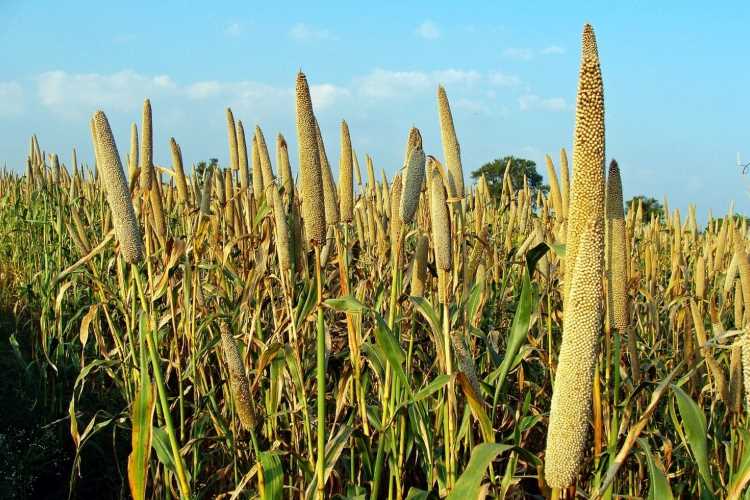
By Diptimayee Jena and Srijit Mishra
The Special Programme for Promotion of Millets in Tribal Areas of Odisha: Malnutrition is one of the greatest health and development challenges at present. Ending all forms of malnutrition by 2030 is one of the targets under the second sustainable development goal. Revival of millets that are considered as smart crops because of their resilience to climate change and nutritional advantages will be important in this regard. The Special Programme for Promotion of Millets in Tribal Areas of Odisha, also referred to as Odisha Millets Mission (OMM), was launched in 2017-18.
The programme works through four verticals — production, processing, marketing and consumption — with a unique institutional architecture where the government, civil society and academia work together by complementing and supplementing each other. The objective of the programme was to help conserve biodiversity, bring about greater climate resilience and to achieve better nutritional outcomes.
READ I Union Budget 2021: Seven ideas to transform Indian agriculture
Spread of millets programme in Odisha
In the first year of Odisha Millets Mission (2017-18), the yield more than doubled from 5.79 quintals per hectare to 12.72 quintals per hectare and the value of the produce more than tripled from Rs 3,957 per farmer to Rs 12,486. In the four years between 2017-18 and 2020-21, the footprint of the mission spread from 8,596 to more than one lakh farmers, from 29 blocks in seven districts to 76 blocks in 14 districts, and from 5,182 hectares to 46,641 hectares. It transformed from a finger millet centric intervention to include six other millet crops in its production intervention programme with new agronomic practices.
To ensure market support, the Odisha government started procurement of finger millet in 2018-19 through the Tribal Development Co-operative Corporation of Odisha Ltd (TDCCOL) and distributed it as a one-time additional amount to some households under the existing public distribution schemes.
In 2019-20, this procurement was extended to remote regions where this was the first ever procurement for any grain. In 2020-21, farmer producer organizations (FPOs) were roped in to be in charge of collection centres in 16 blocks to facilitate TDCCOL in the procurement of finger millet. Some of these collection centres will be operated by women self-help groups.
READ I Why Narendra Modi govt must address farmers protest
Millets consumption and nutritional intervention
Through numerous consumer awareness activities in Odisha including the sale of millet and millet-based value-added products in TDCCOL (Adisha) outlets, millet consumption was promoted among pre-school children by introducing finger millet ladoos as a morning snack in Keonjhar and Sundargarh districts with the financial support from the respective district mineral foundations.
The ladoo was an add-on to the existing supplementary nutrition programmes of Integrated Child Development Scheme of the women and child development department. Women of self-help groups under Mission Shakti were involved in the preparation of ladoos in an exercise in convergence across schemes and departments of Odisha government. This was made possible by the collaboration between Nabakrushna Choudhury Centre for Development Studies, Indian Institute of Millets Research and Central Food Technological Research Institute (CFTRI) that saw the coming together of social sciences, agricultural science and food technology.
This should be further leveraged to introduce millet-based recipes under supplementary nutritional programmes like the integrated child development and mid-day meal schemes. Odisha should consider introducing alternative recipes by substituting existing menu for a substantive nutritional intervention.
READ I Farm Bills 2020: Death warrant to mandis, end of small farms
Challenges to millets procurement plan
During the implementation of the programme, a major challenge came up in the form of the task of preserving all varieties of millet grown in the state. This was vital for conserving biodiversity under different agro-ecological conditions, preserving their strengths to ensure food and nutritional security.
Some developments in plant sciences have largely focused on major millets like pearl millet, sorghum and finger millet. The minor millets such as little millet, foxtail millet, kodo millet, and barnyard millet have smaller grains with much lower yield and greater caution is needed in their processing. But they have the potential to address the food and nutritional security issues. To include all these millets into supplementary nutrition programmes, the Odisha government should consider procuring other millets and minimum support price should be fixed for them too.
READ I Budget 2021: Proposals to put Indian economy, industry back on track
The lessons from Odisha Millets Mission
To sum up, the millets initiative of Odisha is a laudable attempt. In the process, it has lessons on convergence within and between line departments. The programme creates an institutional architecture wherein the government, civil society and academia work together. Procurement of finger millet and its inclusion in public distribution and other welfare schemes is a welcome step.
Millets are considered smart crops that are resilient to climate stress and have nutritional advantages. Odisha’s initiative in millets, from farm to plates, has been intervening in production, processing, marketing and consumption. It has important lessons for other states in India as elsewhere. A logical extension of the programme will lead to conservation of biodiversity, greater climate resilience, and better nutritional outcomes.
(Diptimayee Jena is a PhD Scholar at Nabakrushna Choudhury Centre for Development Studies (NCDS), Bhubaneswar. Srijit Mishra is Professor, Indira Gandhi Institute of Development Research (IGIDR), Mumbai. This is a shorter version of a policy brief. Views are personal.)
